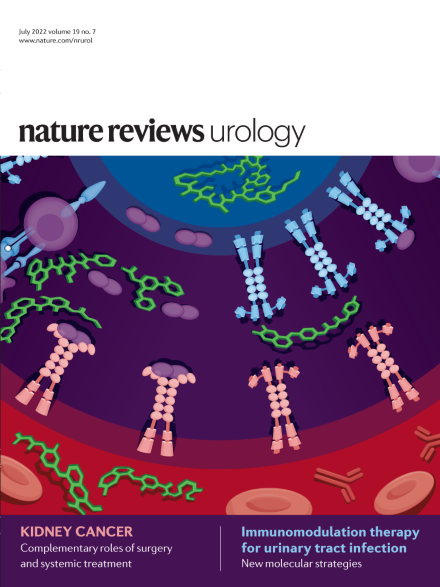Play all audios:
Prognostic models incorporating clinical and pathological parameters might assist clinicians in counselling and surveillance of patients following surgical resection of renal cell carcinoma
(RCC). Variability exists in the risk classification of individual patients in each model as well as the performance of each model in different RCC subtypes.
The extent, duration and causes of alterations in the testes caused by SARS-CoV-2 are unclear. A new study has documented the effects of SARS-CoV-2 infection on the testes of a golden Syrian
hamster model; however, the relevance of these findings to non-severe human infection is questionable.
The highest risk of death from prostate cancer is associated with increased waist circumference, increased blood pressure, hypertension, type 2 diabetes and obesity; thus, therapies that can
reduce blood glucose levels have the potential to improve patient outcomes. The therapeutic benefits of low-carbohydrate and fasting-mimicking diets in patients with prostate cancer have
been investigated in two recent studies.
Standard-of-care management of renal cell carcinoma (RCC) relies on surgery for low-risk localized disease and systemic treatment for poor-prognosis metastatic tumours, but patients with
high-risk localized tumours and with metastatic disease that has a good-to-intermediate prognosis are in a grey area for treatment. In this Review, the authors provide a comprehensive
overview of the current knowledge on surgery and systemic treatment in the management of metastatic and localized RCC.
Hyperactivation of innate immunity is a disease determinant in urinary tract infections (UTIs). Modulation of innate immunity has promise as a therapy for UTIs. In this Review, the authors
discuss potential mechanisms and immunomodulatory therapeutic strategies in UTIs.
The sixth edition of the WHO (World Health Organization) semen analysis manual has been released 10 years after the previous edition and includes important updates. In this Perspective
article, a comprehensive overview and discussion of the newly released WHO manual are provided. Limitations of routine semen analysis-based infertility assessment and potential solutions to
improve male infertility work-up are also discussed.

